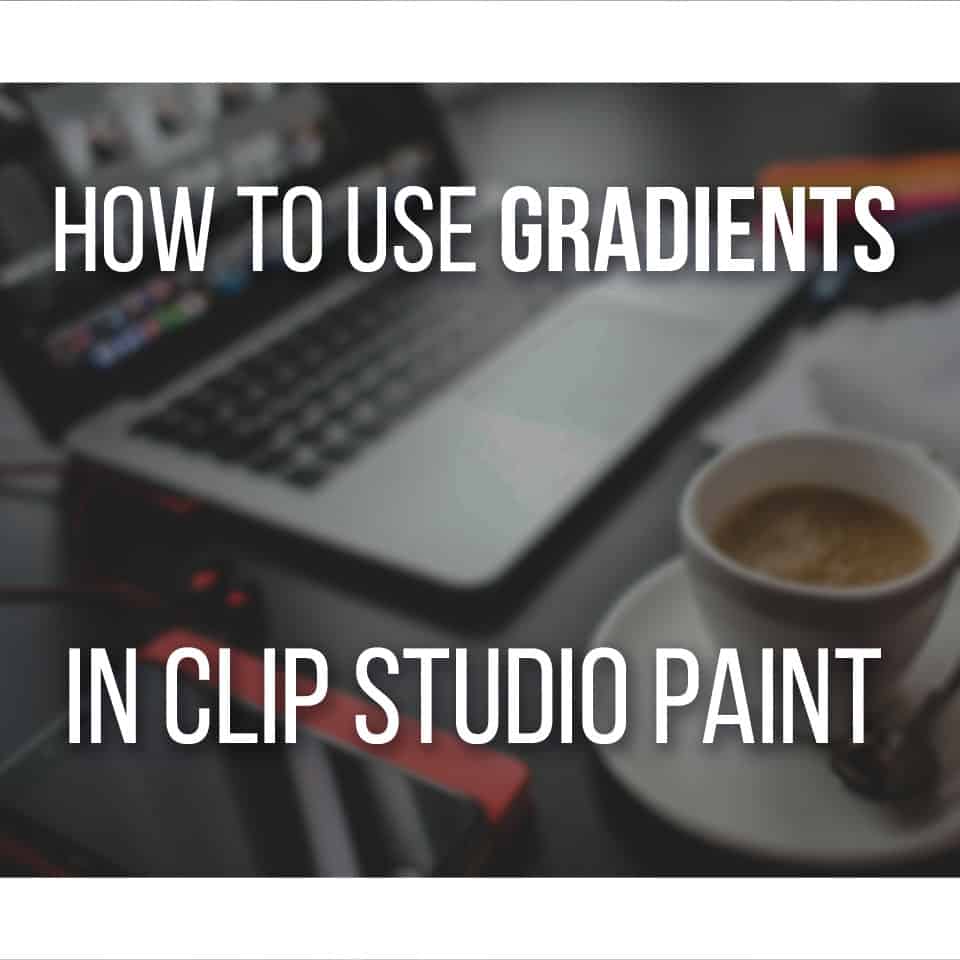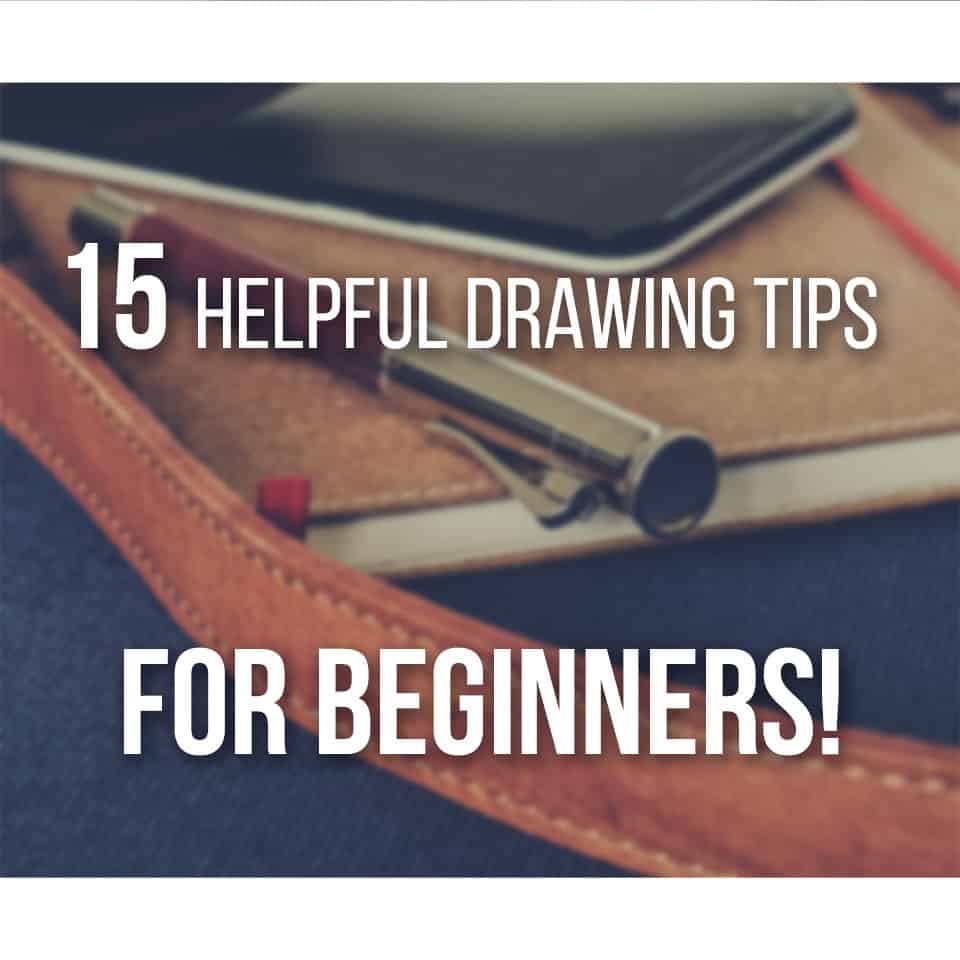When trying to improve at gesture drawing, there are a few tips that you should follow to level up your drawing skills quickly.
Drawing people isn’t an easy skill.
But when you have a solid base through the use of gesture drawing, you know your final result will be 10 times better!
These are tips, not rules that you must follow.
But if you can remember these gesture drawing tips, you’ll be a much more skilled figure drawing artist in no time!
So let’s go over these tips so you can capture the gesture much better.

Table Of Contents
7 Best Gesture Drawing Tips
Here are some gesture drawing tips to improve the drawing of your figures!
Don’t Focus On Details, Capture The Pose First
You should use gesture drawing to capture an entire pose, not to work on the details!
Leave the details for later when you’re drawing the human figure.
When you first start a gesture drawing, what you want to focus on is the essence of the pose.
Which basically means capturing the entire movement of the figure in as few strokes as possible.
You can focus on the rest of the body later.
And to capture the essence, you’ll want to draw the action line (or line of action) of the pose that captures the entire range of motion of the figure.
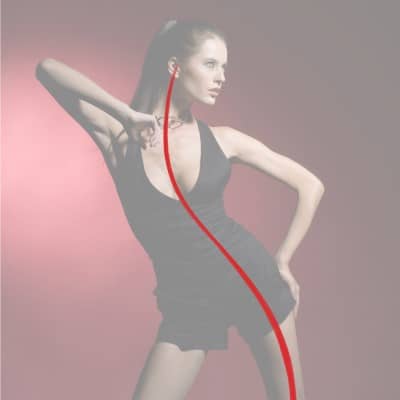
The goal of gesture drawing is to capture the entire pose quickly.
You can also exaggerate this motion, you don’t need to stick 100% to the reference!
Try to exaggerate the aspects of the figure, and then dial back until you’re happy with the result.
This is a great way to capture the entire human form, which you can use to draw the figure in more detail later on.
You can even start with a simple stick figure on your sketchbook first!
Keep Your Lines Loose And Confident
A common mistake when artists practice gesture drawing, is keeping their lines very stiff and rough.
If you’ve been to any drawing classes before (especially for live drawing), teachers will tell you to keep your lines loose!
And this is one of the most important tips for gesture drawing that I can give you.
Keep your lines flowing!
Not only will this prevent some hand and wrist pain but it will also make your drawings much more interesting and confident.
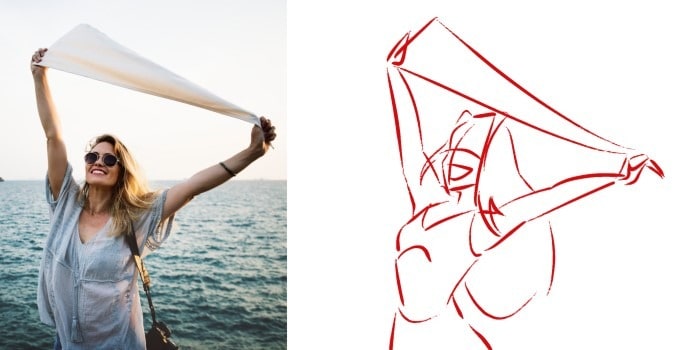
To do this, avoid using straight lines, draw lines using curves and do big motions when drawing each part of the gesture!
Lines define the entire movement of your gesture drawing practice, so be sure to do each one confidently.
Draw From Life (Or Use A Reference Photo)
When trying to master subject, every artist should use a reference image!
Professional artists have been drawing for decades, and they’ll still use reference images to help them every day.
When drawing the gesture of a figure, if you have a reference from life, you’ll be able to much more easily figure out the form and shape of each body part.

If possible, join life drawing classes near you where you can see the live model, so that you can make a study of the human body in a much more effective way.
With that said, if there aren’t any classes near where you live, or you prefer to stay in the comfort of your home, there are many pose reference websites that you can use for free!
So just grab a photo reference and keep practicing the basics of gesture drawing to improve quickly!
Don’t Forget The Negative Space
When drawing a pose or gesture, you must also think about the negative space!
Negative space is the empty area around the figure.
If you focus on the negative shapes of your reference, you can make a much more focused gesture.
It creates tension and depth and will help you better understand the entire human figure.
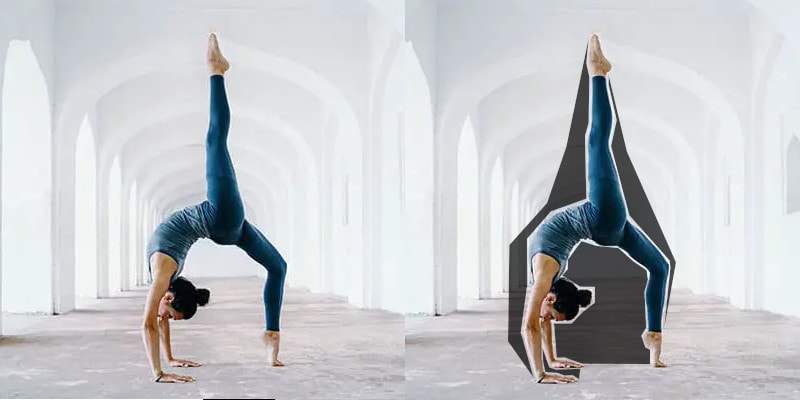
Not only that but noticing the negative space in your gesture drawing will make you draw the proportions of the figure much more correctly.
You’ll be able to capture the entire figure and pose in a way that will require less fine-tuning later on!
So don’t forget the negative space of your gesture!
Keep The Entire Pose On Your Page
When sketching gestures and drawing in general, sometimes we artists tend to forget the size of our canvas.
This can be a problem.
Before you notice it, you’ll start to squeeze parts of the human body down to fit the page!
So try to draw the entire pose on your page.
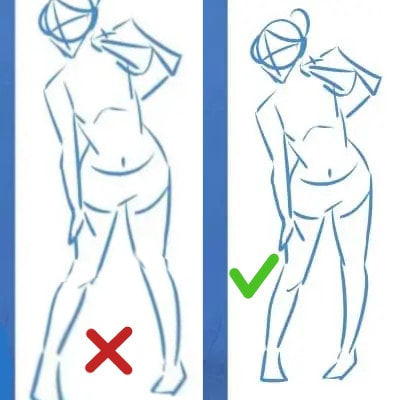
To do this, you can mark the top and bottom of the gesture you’re working on before drawing it. Stick to these dimensions while you’re working on your gesture, and tweak out the proportions later on!
I recommend you start by drawing the head and then going down the body.
Draw the gesture of the torso, legs, and feet until you reach the mark you’ve created.
With that said, each artist will have their own method of drawing gestures.
So take this tip just as it is, a tip!
Stop Erasing Your Lines
Gesture drawing is a method to capture the entire movement of a pose.
It is not an exercise in creating a finished drawing!
So when practicing gesture drawing poses, stop erasing your lines so much.
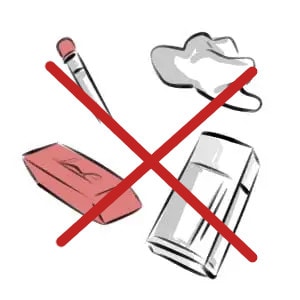
You’ll want to keep your lines loose as we talked about, and if you keep on erasing them, your lines will become a big mess!
If you’re still having trouble with this gesture drawing tip, here’s what I recommend:
Use pen and ink to practice gesture drawing!
This way, you won’t be able to erase your gestures, even if you wanted to!
This can be a great way to improve quickly, so I recommend you give it a try!
Try Different Timed Gesture Drawing Exercises
Time is of the essence when doing gesture drawing exercises!
Some artists love to create quick sketches, so making quick gestures is second nature to them.
BUT some artists are not like this.
Many artists like to take a long time with their drawings and sketches.
And that’s completely fine!
But the purpose of doing these gestures, is to draw a figure quickly.

So to improve at gesture drawing, I recommend you to time your practice!
Start with a longer period of time, and then keep going down to test your skills:
- 5 minutes
- 2 minutes
- 1 minute
- 30 seconds
To do this, simply grab your phone and put on a timer.
But sometimes the urge to keep on drawing can be too much!
So you can also use a website such as line-of-action.com to keep changing the reference image in a time interval.
This can be a bit overwhelming at first, but you can do this!
Related Questions
Now that we’ve gone over all these tips for gesture drawing, let’s run through some related questions that you might have!
Is Gesture Drawing The Same As Figure Drawing?
Gesture drawing is not the same as figure drawing.
While gesture drawing is an exercise to make a quick drawing of the human figure, figure drawing is a drawing of the entire human body with each feature present.
You can read more about the Differences Between Gesture Drawing And Figure Drawing here.
Is Gesture Drawing The Same As Contour Drawing?
Even though gesture drawing can be somewhat similar to contour drawing, they are not the same thing. Gesture drawing is very loose and focuses on capturing the movement of the human figure. While contour drawing is much more precise, creating contour lines that trace the outline of a subject!
So while gesture is meant to capture the entire energy of your reference image, contour will only show the silhouette of that same figure! You can learn what gesture drawing is and the differences between it and contour drawing (with examples) here!
And if you want to know how professionals do gesture drawings, check this article on the Best Gesture Drawing Examples From Master Artists!
Patricia Caldeira is the main writer here at Don Corgi. She's an art teacher with over 20.000 happy students across many platforms and courses!
Enjoy your stay and as always:
Keep on drawing!

